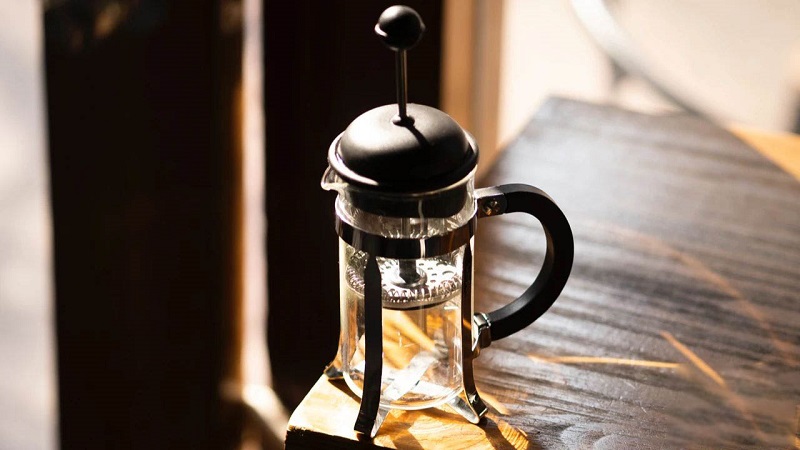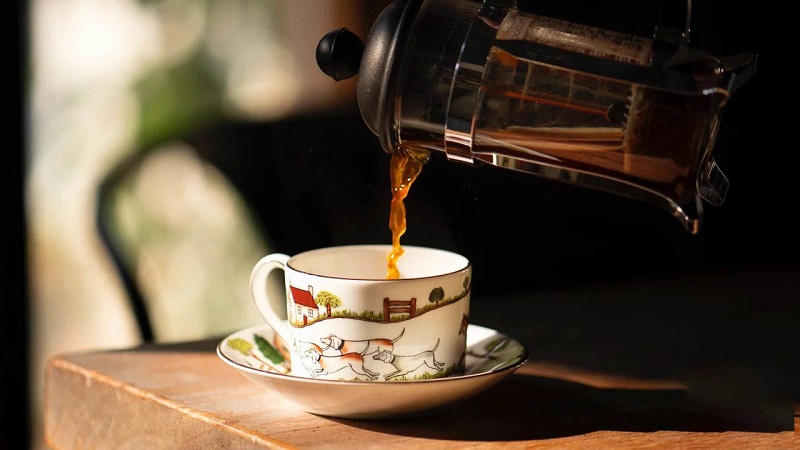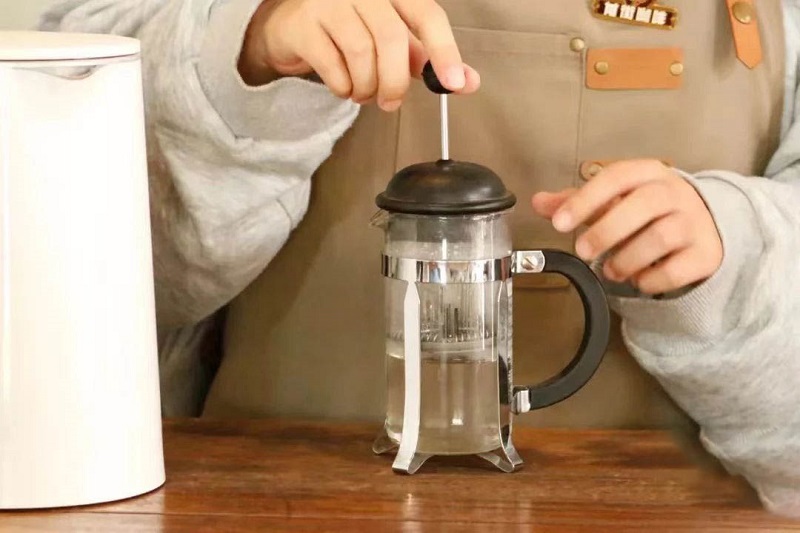The method of making a pressed pot of coffee may seem simple, but in reality, it’s really simple!!! There is no need for too rigorous brewing techniques and methods, just soak the corresponding materials and it will tell you that making delicious coffee is so simple. Therefore, a pressure cooker is often a necessary tool for lazy people!
French Press Pot
Speaking of the French press pot, its birth can be traced back to France in the 1850s. The “piston filter coffee device” was jointly invented by two French people, Meyer and Delphi. After applying for a patent, it was officially named the French press pot for sale.
However, due to the inability of this press pot to balance the center of gravity of the filter when making coffee, the coffee powder can easily escape from the cracks, and when drinking coffee, it is often a mouthful of coffee residue, resulting in very poor sales.
Until the 20th century, Italians corrected this “bug” by adding a set of springs to the filter screen, which allowed the filter screen to maintain balance while also increasing sliding. Therefore, the coffee produced by this version of the French press pot no longer makes people dross every sip of coffee, so the convenient and fast version immediately became popular, and it is also the version we see now.
From the appearance, we can see that the structure of the pressure vessel is not complicated. It consists of a coffee pot body and a pressure rod with a metal filter and spring plates. The steps to make coffee are also very simple, including adding powder, pouring water, waiting, pressing down, and completing the production. However, often, some novice friends will inevitably brew a pot of pressed coffee that does not taste satisfactory.
Since we do not have any major actions that can affect extraction during the production process, after ruling out the influence caused by human factors, we know that the problem will inevitably lie in the parameters:
Grinding degree
First of all, it’s grinding! In terms of grinding, the recommended method for pressure cooker tutorials that we can see online is generally rough grinding! Similarly, Qianjie also suggests that novices use coarse grinding to make coffee in a French press pot: the 70% pass rate of the No. 20 sieve is a suitable grinding degree for French press pot soaking, which can be described as coarse sugar grinding by analogy.
Of course, it does not mean that fine grinding cannot be used, but rough grinding has more room for error tolerance, which can reduce the probability of excessive extraction due to prolonged soaking! And fine grinding is like a double-edged sword. Once soaked, the flavor is extremely full. If not soaked well, it’s just a bitter taste in the mouth!
In addition to being prone to over extraction, it also has a drawback – excessive fine powder. Because the gaps in the metal filter are not as small as those in the filter paper, these extremely fine powders can easily pass through the gaps in the filter and be added to the coffee liquid. In this way, although coffee will add a bit of richness and flavor, it will also lose a lot of cleanliness as a result.
water temperature
Because the water injection in the pressure vessel is a one-time injection, there will be no stirring action that increases the extraction rate during the soaking process. Therefore, we need to increase the water temperature slightly to make up for this extraction rate, which is 1-2 ° C higher than the conventional hand flushing temperature. The recommended water temperature for medium to light roasted coffee beans is 92-94 ° C; For medium to deep roasted coffee beans, it is recommended to use a water temperature of 89-90 ° C.
Powder water ratio
If we need to regulate the coffee concentration, then we must mention the powder water ratio! 1: The powder to water ratio of 16 is a commonly used and suitable ratio for the concentration of coffee extracted in a French press.
The concentration of coffee extracted with it will be in the range of 1.1~1.2%. If you have friends who prefer strong coffee, why not try the 1:15 powder to water ratio? The extracted coffee will have a stronger and fuller taste.
Soaking time
Finally, it’s the soaking time! As mentioned earlier, due to the lack of artificial stirring, in order to extract substances from coffee, it is necessary to increase the extraction rate in other areas, and soaking time is another factor that needs to be improved! Under the same conditions, the longer the soaking time, the higher the extraction rate. Of course, if the extraction rate is higher, the probability of over extraction will also increase.
After testing, if medium to light roasted coffee beans are used, it would be more appropriate to control the soaking time by about 4 minutes in combination with other parameters mentioned above; If it is medium to deep roasted coffee beans, the soaking time should be controlled at around 3 and a half minutes. These two time points can fully immerse the coffee flavor corresponding to the degree of roasting, while also avoiding the bitter taste caused by prolonged soaking~
Write at the end
After using the french press coffee maker, do not forget to perform deep cleaning! Because after soaking, the oil and other substances in coffee will remain on the metal filter, and if not cleaned in time, it will easily lead to oxidation!
So it is recommended to disassemble and clean all parts one by one after use. This not only ensures the delicious production of coffee, but also provides a certain guarantee for our health~
In addition to making coffee, it can also be used to make tea, beat hot and cold milk bubbles for flower pulling, which can be said to combine a variety of advantages in itself. The key is that the price is very suitable, it is simply not too competitive!!
Post time: May-27-2024








